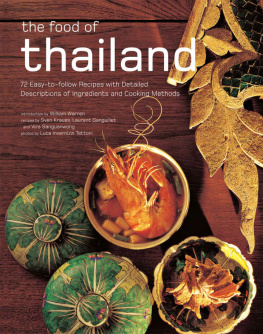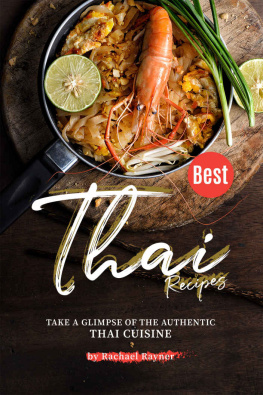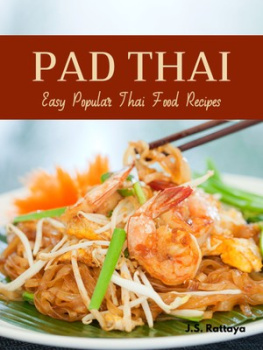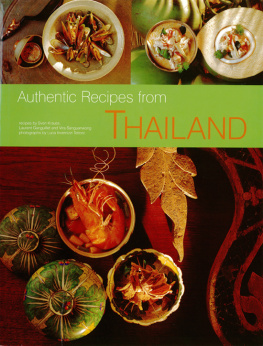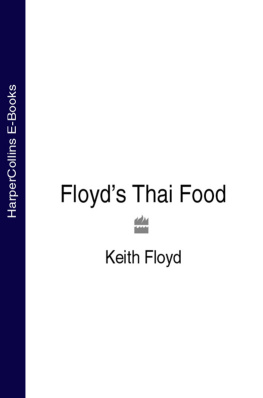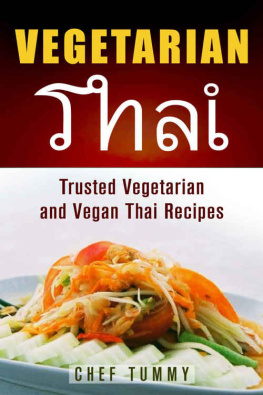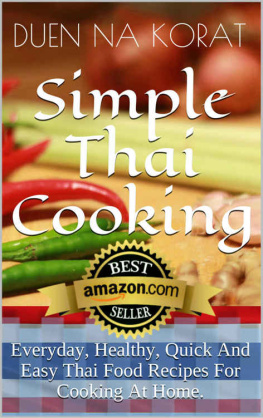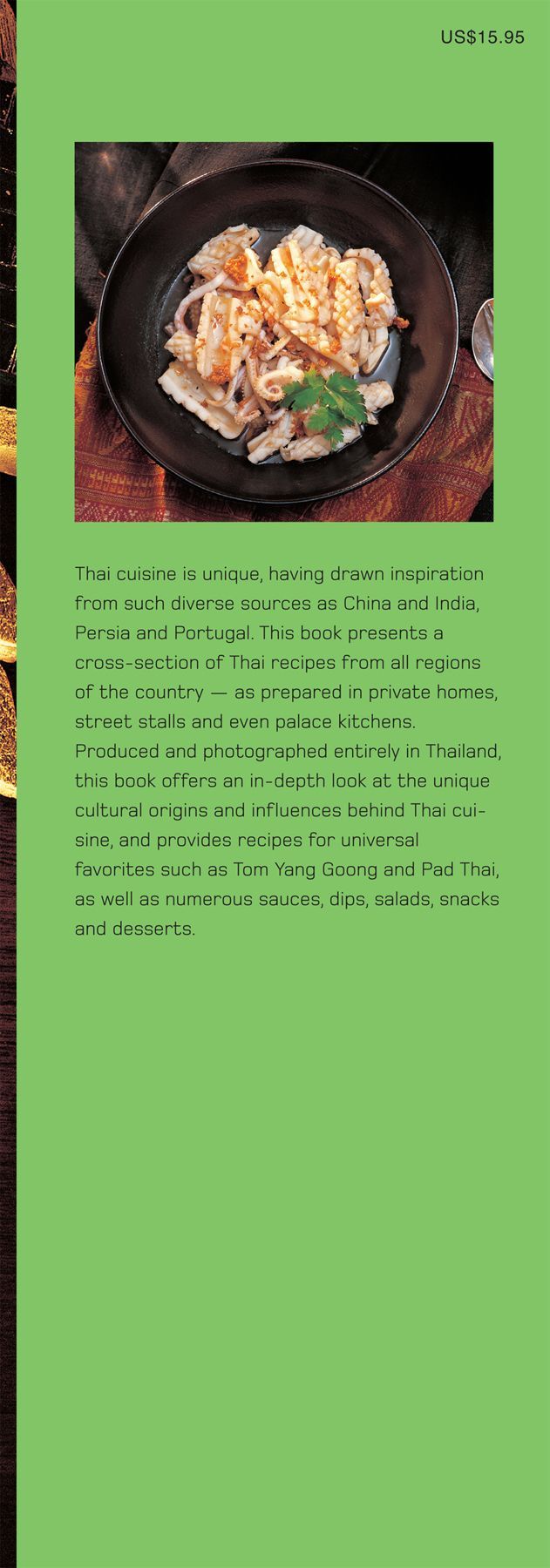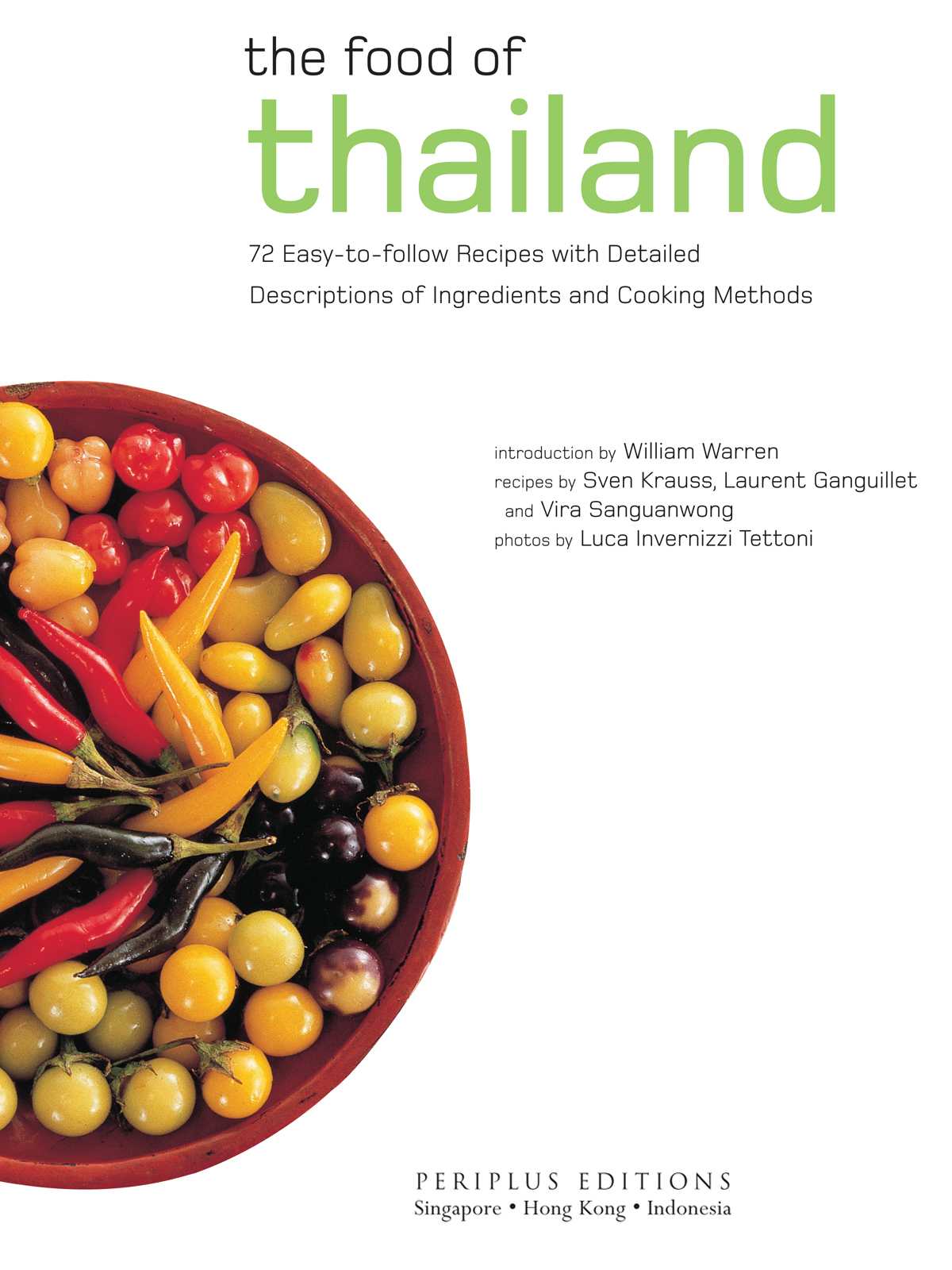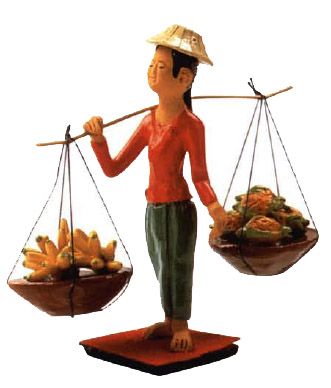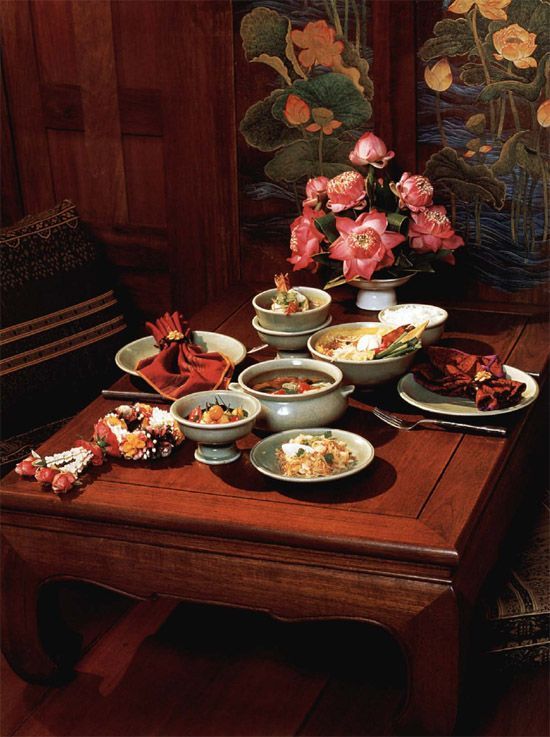Published by Periplus Editions with editorial offices atand 61 Tai Seng Avenue, #02-12, Singapore 534167
Copyright 2004 Periplus Editions (HK) Ltd.
All rights reserved.
Hardcover ISBN: 978-0-7946-0627-5
Paperback ISBN: 978-0-7946-0626-8
Ebook ISBN: 978-1-4629-1634-4
Previously published as Authentic Recipes fromThailand
ISBN: 978-0-7946-0210-9 (hc)
ISBN: 978-0-7946-0207-9 (pb)
A table for two is more likely to be found in a restaurant than in a family home, where dining is a sociable experience shared by many.
The Food of Thailand
International acclaim for Asia's most popular cuisine
Images of Thailand among outsiders vary according to taste and temperament. To some, the country conjures up a King and I fantasy of gilded temples and palaces, to others a palm-fringed beach of snowy white sand, an exotic tribal village high in misty mountains or the brassy, big-city lure of Bangkok. All are valid enough as individual impressions, yet misleading in terms of the whole, for Thailand, like its food, is a complex mixture of flavors and the product of a unique history.
Covering some 198,500 square miles (514,100 square kilometers)roughly the size of Franceit encompasses a wide range of topography Mountains in the far north, where Thailand's borders meet those of Burma and Laos, rise to more than 8,000 feet (2,500 meters), with verdant valleys and the remains of once-extensive teak forests.
The northeast consists of a rolling, semi-arid plateau stretching all the way to the Mekong River, while the flat central plains, watered by the Chao Phraya River, form one of the richest rice-growing regions on earth. The narrow southern isthmus, extending down to Malaysia, is bordered on one side by the Gulf of Thailand and on the other by the Indian Ocean, with a spine of rugged limestone mountains down the middle.
A largely benign climate allows year-round cultivation of crops, not only rice but also fruits and vegetables Even today, despite the growth of urban areas, the great majority of the population can be found in rural villages of around 150 households (about 700 people) who derive their living from agriculture. Other natural resources include a variety of minerals, precious stones, such as rubies and sapphires. and an abundance of seafood along two long coastlines bordering the Indian Ocean to the west and the South China Sea to the east.
A Land of Plenty
The Thais were not the first people drawn to this land of plenty Evidence of settlers dating back to the Paleolithic Age, some 500,000 years ago. has been found in several parts of the country, and archaeologists exploring a cave near the Burmese border discovered the carbonized remains of such plants as Chinese water chestnut, bottle gourd and cucumber that were dated from 9,700 to 6,000 B.C. The most dramatic and extensive prehistoric remains have emerged in the northeast, where a remarkable culture flourished from around 4,000 B.C. to just after the start of the Common Era, numbering among its achievements rice cultivation and sophisticated bronze metallurgy.
Indian traders later established ports along the southern peninsula, bringing not only Buddhism but numerous other cultural and culinary influences. Mon settlers arrived around the same time in the Chao Phraya valley and founded the Dvaravati kingdom, a major producer of rice as well as an important religious center. Their power was eventually replaced by that of the Khmers, whose empire once extended over the northeast and central regions
Rice culture came with the earliest settlers, long before the Thais themselves arrived on the scene, and led to a vast complex of paddy fields watered by an intricate system of canals, rivers and reservoirs.
The ethnic Thais, originating as a minority group in what is now southern China, gradually migrated southward in search of greater independence and better land for agriculture The earliest groups settled in the far north, forming a loose federation of city states centered around Chiang Mai. Others ventured farther south, to the northern extremities of the central plains By the 13th century, the Thais had established themselves in such numbers that they were eventually able to overthrow their Khmer overlords and establish a kingdom of their own.
This kingdom was called Sukhothai, which in Sanskrit means "Dawn of Happiness," and though its power lasted less than two centuries, its influence proved far more enduring. Under King Ramkhamhaeng, the greatest Sukhothai ruler, the Thai alphabet was devised, splendid works of Buddhist art were created and a truly indigenous Thai culture emerged.
"In the water there are fish, in the fields there is rice." This celebrated stone inscription is credited to King Ramkhamhaeng of Sukhothai, the first independent Thai kingdom founded in the early 13th century. The inscription testifies to a natural abundance that was to sustain a series of capitals down the length of Thailand's fertile Chao Phraya River valley and more specifically, to the two staples of the Thai diet since thenrice and fish.
To these basic ingredients, readily available to all, were gradually added others, drawn over the centuries from a wide variety of cultures: some nearby, like China and India, some remote like Persia and Portugal Even such seemingly essential elements as the pungent chili pepper were, in fact, introductions from distant South America. However they came, though, they were subtly modified and refined into a cuisine distinctively Thai, not quite like any other in the world.
The diverse glories of classic Thai cooking long remained unappreciated by the outside world. Alone among the countries of Southeast Asia, Thailand remained independent during the era of colonization; thus, relatively few Westerners sampled its unique blends of hot and sweet, sour and saltyso different from the dishes of India, Malaya and Indonesia, despite superficial similarities.
Even those who came for lengthy stays were rarely treated to the genuine fare. Restaurants catering to foreigners in larger cities like Bangkok tended until quite recently to be Chinese or European. For the most part, only in private homes could one sample delicate, traditional dishes that resulted from hours of preparation by skilled hands, using methods that had been handed down for generations.

